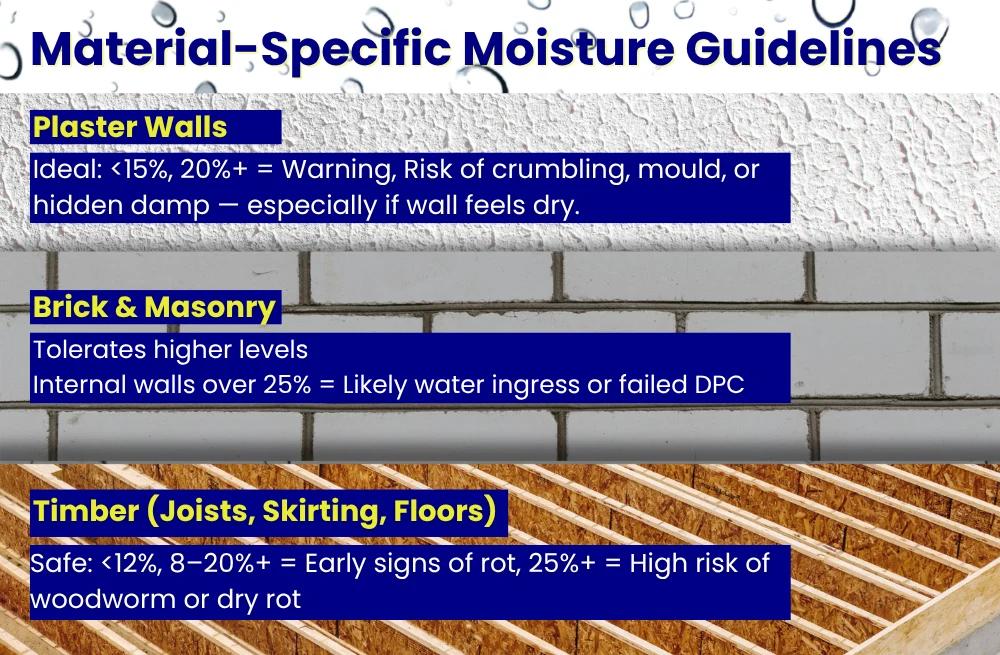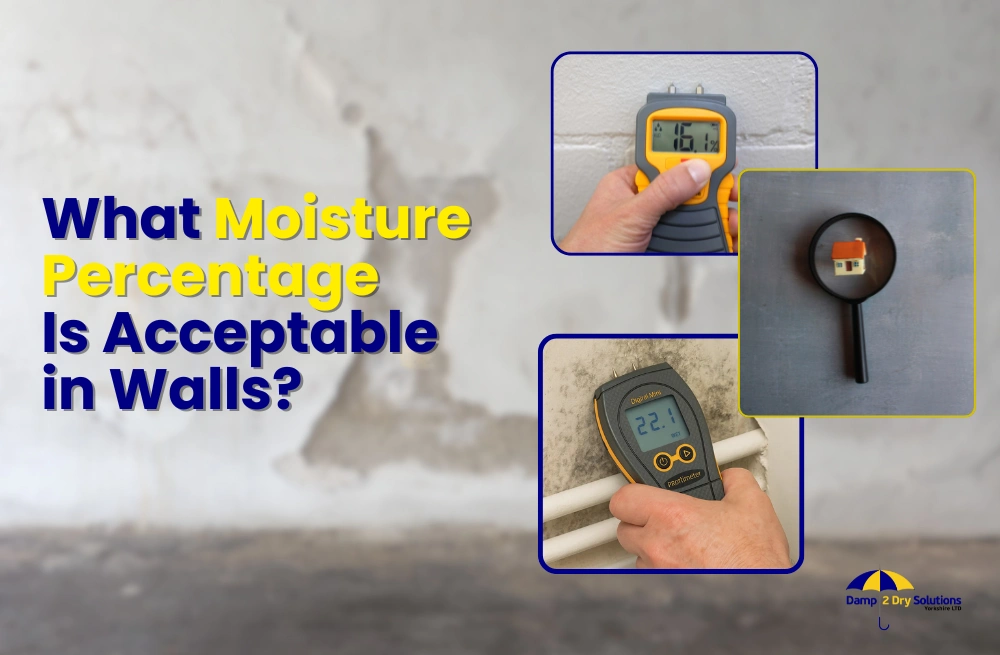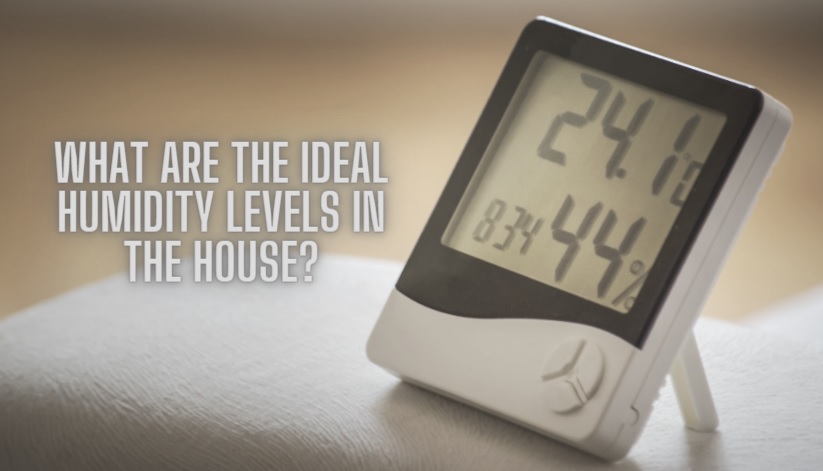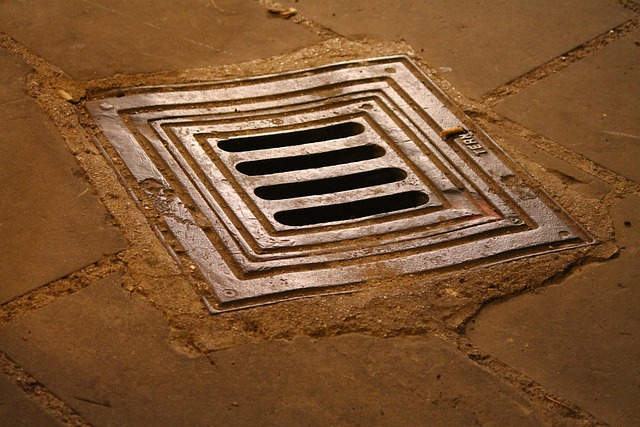If your walls could talk, they’d probably warn you about hidden damp long before you spot the mould or peeling paint.
Moisture in walls isn’t just annoyin, it can quietly damage plaster, rot timber, and even weaken your home’s structure. Worse still, it can lower your property value and lead to expensive repairs if ignored.
The good news? You don’t need to rip your walls apart to find out. A moisture metre (also called a damp metre or wall moisture detector) is a simple tool that shows you if your walls are holding too much moisture.
In this blog, we’ll walk you through:
- What a moisture metre is and how it works
- What’s considered a “normal” wall moisture level
- How to check for damp yourself — with or without a metre
- When to call in a professional
Let’s get started.
What Is a Moisture Metre, And How Does It Work?
A moisture metre (sometimes called a damp metre or moisture detector) is a handheld device used to measure how much water is present within a material, like your internal plaster, brickwork, or timber. Think of it as a thermometer for damp.
Pin vs Pinless Moisture Metres
There are two main types:
- Pin-type metres: These use two small prongs you press into the surface. They measure the electrical resistance between the pins — and since water conducts electricity, the result tells you how damp the material is. They’re great for getting readings inside walls or timber.
- Pinless metres: These sit on top of the surface and use electromagnetic sensors to detect moisture without poking holes. They’re quick and non-invasive, ideal for surfaces you don’t want to damage (like painted plaster).
Where They’re Used
Moisture metres work on a range of building materials, including:
- Plaster: Internal walls, ceilings, skim coats
- Brick or Masonry: External walls, basements, fireplaces
- Timber: Floorboards, skirting, joists, window frames
Most modern models give readings as a percentage. So the big question is: what do those numbers mean?
Why Moisture Levels Matter
Walls are supposed to breathe, but not drip. Too much moisture in your home’s structure can lead to all sorts of headaches:
- Health issues: Mould and mildew aren’t just ugly, they trigger allergies, asthma, and other respiratory problems.
- Cosmetic damage: Bubbling paint, flaking plaster, and tide marks spoil your décor.
- Structural concerns: Persistent damp can weaken bricks, rot timber, and even affect your home’s foundations.
- Property value: Surveyors spot damp, and buyers get scared. Moisture problems are a red flag in any home sale.
That’s why knowing what’s “normal” and what’s not, is key.
What Moisture Percentage Is Acceptable in Walls?
Understanding the numbers on your moisture metre is crucial, but the context behind them matters just as much. A wall reading of 18% in one home might be perfectly manageable, while in another, it could be the sign of a growing damp problem.
General UK Moisture Ranges
Here’s how most professionals interpret wall moisture levels in the UK:
Dry (0–15%)
This is considered the safe zone for most interior walls and timber. Plaster should be comfortably below 15%, especially in heated, ventilated rooms. Readings in this range typically mean your wall is performing as it should.
Borderline / At Risk (16–20%)
This is a grey area. It doesn’t automatically mean there’s a problem, but it does suggest elevated moisture levels — potentially due to seasonal condensation, minor ventilation issues, or lingering damp from previous problems. If you spot 18–20% in colder months, monitor it and retest during a dry spell. If it stays high, that’s a red flag.
Damp / Action Needed (21% and above)
Anything over 20% in internal plaster is widely considered excessive and may indicate a problem such as rising damp, a plumbing leak, or poor insulation/ventilation. You’ll want to investigate further — especially if the reading is taken from a surface that should be dry (like a living room party wall or bedroom ceiling).
Material-Specific Considerations

Moisture behaves differently depending on what the wall is made from. Here’s how readings vary by material:
- Plaster: Highly porous and quick to absorb water. It should remain below 15% in most conditions. High readings here can quickly lead to blistering paint, mould growth, or plaster crumbling. If your internal plaster wall is reading 20% or more, that’s a concern, especially if it’s dry to the touch (which can be misleading).
- Brick and Masonry: These often hold more residual moisture and can show slightly elevated readings without being a major issue, especially on external walls or during wet seasons. However, internal-facing brickwork with levels over 25% could signal a deeper moisture ingress issue or failed damp proof course (DPC).
- Timber (Joists, Skirting, Floorboards): Indoor timber should stay below 12%. Once it climbs above 20%, you’re entering rot and insect infestation territory. Timber at 25%+ is practically begging for dry rot or woodworm. Skirting boards showing over 18% often indicate moisture wicking from nearby damp plaster or flooring.
Environmental Factors That Affect Readings
Before you panic over a 19% reading, remember that moisture levels can shift day to day. Here’s what can impact your results:
- Recent Rainfall or Snow: Walls exposed to weather, especially single-skin masonry or old stone, will naturally show higher readings for a while.
- Seasonal Humidity: Winter brings cold surfaces and warm, damp indoor air. This increases the risk of condensation, which may cause temporary spikes.
- Poor Ventilation: In bathrooms, kitchens, or rooms with blocked air bricks or no extractor fan, trapped humidity can inflate readings.
- Heating Use: Heated homes tend to have lower internal moisture levels than unheated or vacant properties.
- Previous Damp Treatments: Some walls may have been treated with damp-proof membranes or injections that skew the results of certain DIY metres.
How Professionals Judge Readings
Surveyors don’t just rely on one number from one spot. They take multiple readings across a range of locations and use them alongside visual inspections and thermal imaging. For instance:
- A high reading at the bottom of a wall that drops off as you go higher often points to rising damp.
- If readings are high near windows or in corners but not elsewhere, it might be condensation.
- A single patch of high moisture on an otherwise dry wall could indicate a leaky pipe or gutter issue.
So, while your DIY moisture metre is a fantastic first tool, interpreting the results with a bit of common sense (and sometimes a second opinion) is the best route forward.
How to Check Moisture in Walls Yourself
Even if you’re not a surveyor, you can still get useful readings from your walls — especially with a good-quality moisture detector.
Step-by-Step: How to Use a Moisture Metre
Step 1 – Choose the right metre for your job
For plaster and masonry, a pin-type metre is usually best. For timber, either type works, but pins go deeper.
Step 2 – Test multiple spots
Don’t just test the middle of a wall. Try:
- Bottom corners
- Around skirting boards
- Behind furniture
- External-facing walls
- Cold rooms (like box bedrooms or north-facing lounges)
Step 3 – Read the numbers
- 12% in a dry living room = normal
- 18% near a window = something to watch
- 24% in plaster = time to investigate
Step 4 – Be aware of the limits
DIY metres are great for spotting issues but not as precise as pro tools. Walls with foil-backed insulation or thick coatings may give false readings.
Spotting Damp Even Without a Metre
Don’t have a moisture metre? No worries, your eyes and nose can still give you valuable clues.
Common signs of wall damp include:
- Cold, clammy surfaces: The wall feels different from others in the same room.
- Musty or earthy smell: Damp has a very distinct, lingering odour.
- Peeling paint or plaster: Look for bubbling, cracking, or salt crystals.
- Mould or tide marks: Visible black or green spots, often near skirting or corners.
These symptoms suggest a moisture issue even if you haven’t taken a reading yet.
When In Doubt, Get a Damp Survey
If the signs are stacking up, or your moisture metre is giving you high readings — it’s worth booking a professional damp survey. A trained specialist can identify the source of the issue, assess severity, and recommend the right treatment.
When to Call in the Experts
DIY tools are helpful, but some situations call for a trained eye. Call in a professional damp surveyor if:
Readings Are Consistently Above 20%
If your metre keeps flashing high readings (especially in multiple rooms or on internal walls), it’s not just condensation. A surveyor can use advanced equipment to trace the source and recommend the right fix.
DIY Results Are Confusing or Inconsistent
Getting wildly different readings from one spot to another? Or not sure how to interpret the numbers? A specialist can clarify the cause, especially in homes with cavity walls, mixed materials, or past damp-proofing treatments.
You See Obvious Damp Signs
Mould, black spots, water marks, crumbling plaster, or musty smells? Don’t wait. These symptoms indicate active damp and should be checked professionally to avoid long-term damage.
Conclusion
So, what’s the normal moisture level in walls? Aim for under 15% for internal plaster and wood. Anything above 20% in plaster, or over 25% in masonry, could signal a problem.
Checking your home with a moisture detector now and then, especially in winter, is a smart move. Look out for the visual signs too. A bit of curiosity today could save you from major wall repairs down the line.
And if in doubt, get it checked. A professional damp survey doesn’t just confirm the problem, it sets you on the path to solving it.
Damp 2 Dry Solutions (Yorkshire) Ltd. offers professional damp inspections and treatments across Leeds, Bradford, Huddersfield, Wakefield, and surrounding areas. Whether it’s rising damp, condensation, or just peace of mind, we’re here to help.
Get in touch today for a free quote or to book your survey.





